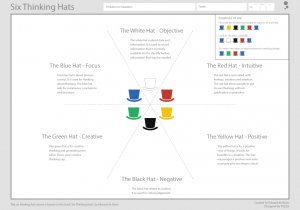

In Part 1 of this article we talked about the intricacy of neurological pathways behind the multitude of decisions we take every day. A franchisor’s decision-making process is a complex skill that can become a determining factor in the success (or not) of the network. So, let’s talk about the key challenges in decision making and consider several tips and tricks to mitigate hidden dangers:
Tip 1: Ask yourself if delaying a rush decision and taking some additional time would make the situation worse.
If the situation would remain about the same, why not give yourself a little more time to think it over and especially to gather key information for an informed decision? When emergency strikes, our reflex is to tackle issues on the spot. Yet taking a couple of hour to evaluate the situation and to weigh the components of our decisions can make a big difference in the quality of our problem-solving approach. We’re often told, “You should sleep on it” before making an important decision… And it’s true! It actually goes beyond taking the time to analyze the situation. When we’re fast asleep, our brain can tap into the vast potential of its network of microconnections and previous experience, and unconsciously search for solutions. That’s the trick behind the magic of waking up with an answer.
Tip 2: Reduce the risk of emergency decision making and problem solving.
Often, the very reason for emergency situations can be traced back to poor planning or a lack of process. Putting out fires clearly refers to that. If you find yourself in situations like that time and again then you might want to take a step back and have a good look at your current processes, rethink your methods and consider developing additional skills in order to limit this “fireman” approach.
Tip 3: Clarify with your network employees and franchisees the nature and the scope of decisions they can make, and establish a clear understanding of the parameters that should be considered.
Indeed, it often takes people several smaller cautious steps to understand what is within their decision scope. So why not simply spell it out for them? This way, everyone can assume their responsibility within the established framework. Besides if you want consistency across the network, all stakeholders must have the same decision-making tools and freedoms. For example, a decision would be considered “good”, if:
Tip 4: Give them the right to make mistakes.
Giving more leeway in decision making and problem solving also means that mistakes may happen. If you want people in your network to feel that they are responsible to find solutions and to take decisions, you must also make sure they know that they would have your support in case of possible mistakes. And I mean “real”, tangible support. Otherwise, they will continue to turn to you every time they feel there is a risk of being wrong.
Tip 5: Keep track of all decisions, both good and bad, and share the experience.
It would help you to avoid the same mistakes and to develop best practices within the network.
Tip 6: Involve people with complementary personalities and different contexts (including franchisees).
It would allow viewing the issue from all the angles and considering various aspects. It also helps to identify risks, to analyze the extent of associated risks, and to solve a complex issue. Another method is the Six Thinking Hats tool designed by Edward de Bono to analyze all facets of a problem and to counter our natural inclination to consider only one perspective. It is based on a simple parallel thinking process where all participants “put on” all six hats in sequence to challenge their modes of thinking and to explore new solutions.

Flexibility and creativity in decision-making will help the key players in your network to take responsibility, to change their habits and to make better decisions.
Sylvie Grégoire, MBA, CRHA, Certificate in NeuroLeadership
President of FlagFranchise and Totem Performance organisationnelle